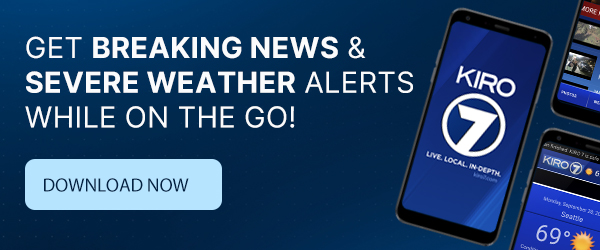WASHINGTON — Emergency preparedness managers say Tuesday’s Tsunami Advisory that was cancelled Wednesday morning, is a good reminder for people in Western Washington to know their plan when to evacuate.
The 8.8 magnitude quake off the eastern coast of Russia is similar to the strength the Cascadia Subduction Zone earthquake could cause.
“That is certianly something that we would want to keep our eyes on, to make sure that if that event posed a danger to Washington, that we were aware of it and communication it,” Daniel Eungard said, lead tsunami program geologist at the Washington Geological Survey.
Anything earthquake stronger than a 7 that occurs in the ocean gets seismologists and geologists attention.
Once the strength crosses an 8.0 on the Richter Scale, that force is almost certain to create a sizable Tsunami. The confirmation one had formed came roughly 30 minutes after the report of the quake, beginning a long night where Eungard tracked the waves across the Pacific Ocean Tuesday night into Wednesday morning.
The largest was a 1.47 foot wave near Port Angeles.
“That’s potentially dangerous if you are operating in a waterway,” Eungard said, “This really was focused on a maritime and near shore hazard.”
Eugard says it was a good practice for protocols given the waves arrived to Washington’s Western Coast around eight hours after it first clocked. The Puget Sound Region is one of the most prone threats to from tsunamis. Eugard says Alaska’s Aleutian Island chain is maybe the most dangerous because of the proximity to Washington.
“An event from Alaska is our most likely and also most hazardous distant event to reach our shores. The Alaska Aleutian subduction zone has very frequent event on it, geologically speaking...and so it produces tsunamis pretty frequently.”
Still in that case, there would be several-hours worth of a notice for people to get to higher ground, for ships to navigate to a safe location, and for ports and harbors the make changes. The most dangerous threat comes from Washington’s own coast line: The Cascadia Subduction Zone.
“[That is} a locally generated event, in which there will be very little time for warning. The earthquake is your warning that a tsunami is coming and the action that people need to take is just get to high ground as quick as possible.”
In that case, there would still likely be at least a couple of hours to prepare. Though, because of the immediacy of a Cascadia Subduction Zone quake, he urges people to study evacuation routes from their home, work, school, or other places they go frequently so they can just react when the time comes.
Maps showing Tsunami threats as well as Evacuation maps are available here.
Many maps and resources in Washington show walking time and pedestrian walking routes. As evidenced by gridlock Tuesday after evacuation notices in Hawaii, a community-worth of cars headed to the same evacuation route can easily create a gridlocked, impassible scene.
It is something people need to plan around, said Amy Cloud, the Public Information Officer for the Whatcom County Sheriff’s Office Emergency management deciscion.
“It’s important to think about what would you be taking with you and how fast can you walk.” said Cloud, “Smaller roads in smaller communities may become congested even if they are the best way to high ground.”
Cloud and Eungard urge people to plan evacuation routes from schools, home, work, grocery stores, and any place they visit frequently.
“When something happens, it’s going to be you. You’re the one who needs to know what to do, where to go, how to get there.
©2025 Cox Media Group





